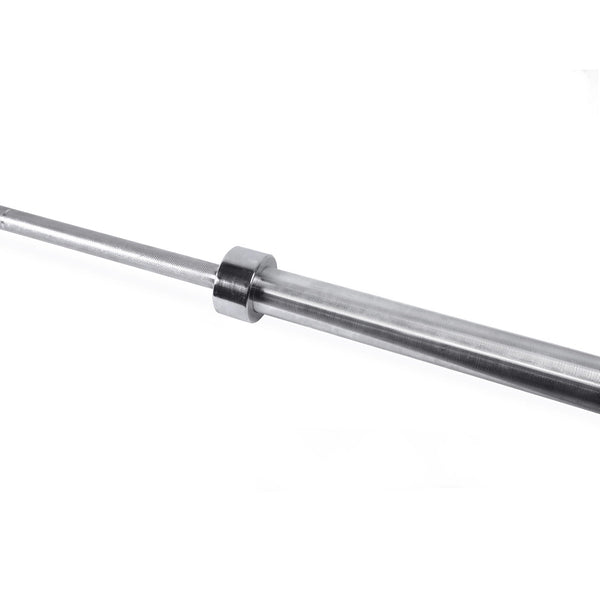Your Cart is Empty
July 23, 2023 3 min read
A barbell is one of the most common pieces of weightlifting equipment found in gyms and home workouts. It’s a versatile tool with many uses, from basic strength exercises to complex Olympic lifts. In order to use it correctly and safely, it’s important to understand the plates and weights that make up a barbell.
Shop The Collection: BarbellsA barbell consists of two parts: a metal bar, usually made of steel, and a set of individual weight plates. The bar itself is usually six feet long and weighs about 20 pounds. Attached to each end of the bar are collars, which hold the weight plates in place. The total weight of the barbell depends on how much weight you add to the collars.
 Shop The Gear: CAP Barbell Olympic Chrome Bar, 7-ft, $89.99 CAD
Shop The Gear: CAP Barbell Olympic Chrome Bar, 7-ft, $89.99 CAD
Weight plates come in different sizes and shapes. They range in weight from 1.25 pounds to 45 pounds. The most common type of weight plates is the “standard” plate, which has a diameter of 2.5 inches and holes in the center to fit onto the barbell. Other types of plates include bumper plates, which are designed for Olympic lifting and have a larger diameter, and fractional plates, which are smaller than standard plates and can be used to add small increments of weight to the barbell.
Shop The Collection: Weight PlatesWhen selecting weight plates for your barbell, there are several factors to consider. First, think about what kind of exercise you plan to do. If you’re doing Olympic lifts or any type of powerlifting, then bumper plates should be your choice. Bumper plates are designed to absorb shock and reduce noise, which makes them ideal for these types of exercises. If you’re doing more general strength exercises like squats, deadlifts, and presses, then standard plates are sufficient.
 Shop The Gear: CAP Barbell "THE BEAST" Olympic Bar, 1000-LB Capacity, 7-ft, $159.99 CAD
Shop The Gear: CAP Barbell "THE BEAST" Olympic Bar, 1000-LB Capacity, 7-ft, $159.99 CAD
Next, consider the weight of the plates. Most people prefer to start with light weights so they can get accustomed to the form and technique of the exercise. Once you’ve perfected your form and want to increase the intensity of your workout, you can add heavier plates. For most exercises, it’s best to keep the weight of the barbell between 10-30% of your bodyweight.
Finally, consider the material of the plates. Steel plates are the most common and affordable option, but rubber coated plates can also be an option. Rubber coated plates are quieter and won’t damage floors if dropped, making them ideal for home gyms. However, they tend to be more expensive than steel plates.
When you’re ready to assemble your barbell, start by attaching the collars to either end of the bar. Then, load the plates onto the bar, starting with the heaviest plates first. When loading the plates, make sure that all of the plates are evenly distributed on either side; this will ensure that the bar remains balanced while you lift. Once you’ve loaded the plates, make sure the collars are secure and the barbell is ready to go!
When using a barbell, it’s important to remember to always use proper form and technique. Make sure to use a spotter when lifting heavy weights, and never attempt to lift more than you can handle. Additionally, make sure to use a weightlifting belt for heavy lifts and always warm up before exercising.
Understanding the plates and weights of a barbell is essential to getting the most out of your weightlifting routine. By selecting the right plates and loading them onto the barbell correctly, you can ensure that you’re using the barbell safely and effectively. With the right knowledge and safety considerations, you can get the most out of your barbell workouts!
Shipping Protection gives you peace of mind while saving you time and money.
Shipping Protection provides coverage for eligible orders that are lost or damaged in transit, or stolen after delivery has been confirmed by the carrier. MAGMA Fitness, through its partners, administers the protection program and may receive compensation for these services. Coverage is subject to the terms, conditions, and exclusions outlined in our Shipping Protection Terms & Conditions.